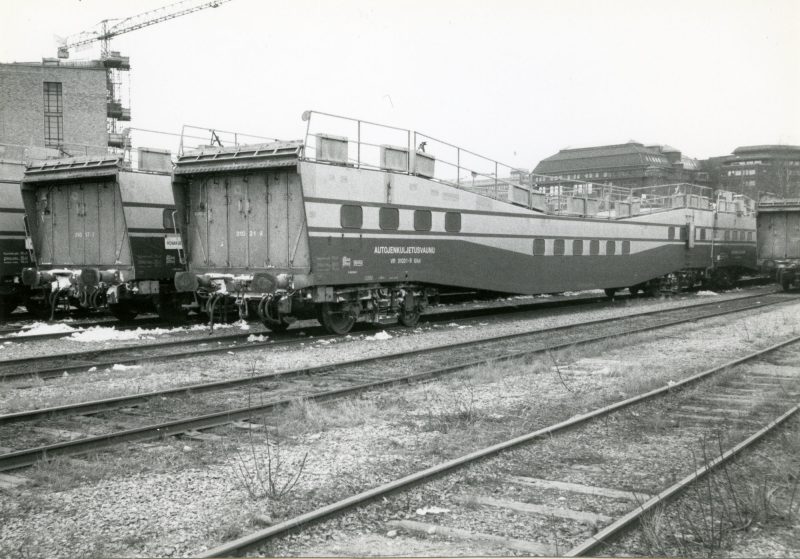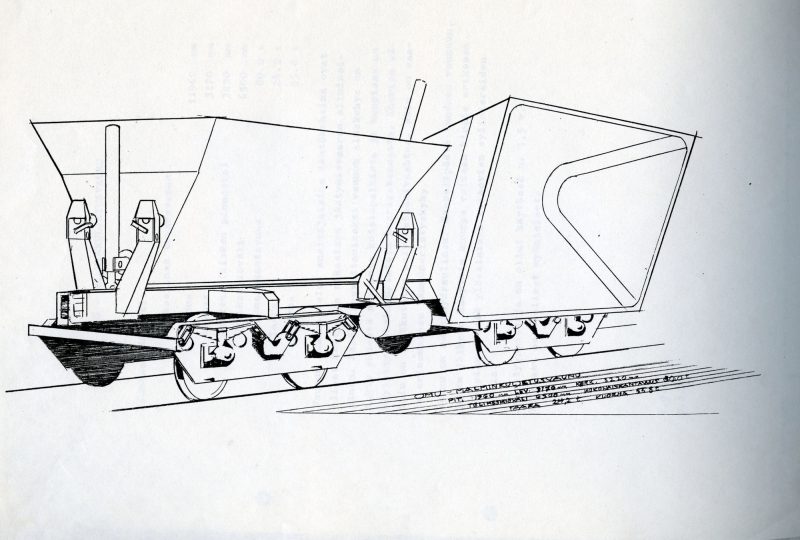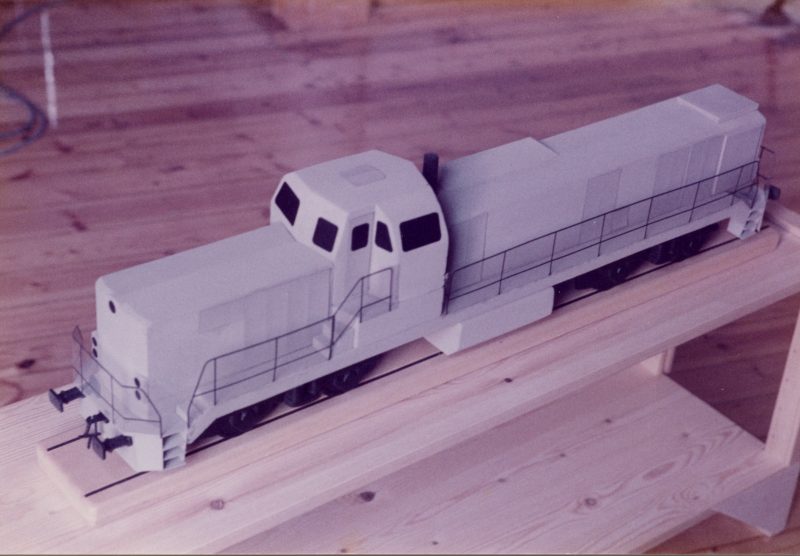Rail and transport equipment
According to Pentti Leskinen, the lines drawn by the designer in the following projects have been the beginning of a development that has led to successful economic activity.
Auto carrier
In the early 1970s, the engineering firm Yleistekniikka offered to design an auto carrier for the Finnish national railways, because car traffic was increasing in the north-south direction and rail transport would save a long drive by spending the night in a sleeping car. The first auto carrier needed to be put into production quickly.
The solution was to build the carriage on the chassis of an old passenger carriage. The walls and roof of the trailer are welded from aluminium profile and the surface material is a corrugated aluminium sheet with pop rivet fastening. A fibreglass-reinforced plastic sheet strip the length of the trolley provides light to the trolley.
In 1974, I was invited into a design team for a new auto carrier. A product idea was born with the following objectives:
A) The carrier must be double decked, as the axles allow the load to be generated in this way.
B) The middle part of the carriage between the bogies is lowered, so that higher cars can be placed in the middle of the upper deck without exceeding the loading pattern prescribed by VR.
C) The lower deck of the carriage shall be enclosed with windows.
D) The upper and lower decks of a carriage can be connected to another carriages by swivel plates, so that the carriages are loaded and unloaded from one end of the last carriage of the train to the other.
E) Colouring and patterning of the carriage to match VR's wishes for passenger carriages.
VR approved the sketch I had drawn, and Yleistekniikka made the drawings for the carriage.
Omu ore transport carriage
Energy saving interested the "brainstorm" of Yleistekniikka Engineering, and we designed several patented product inventions in this field. The design of the ore transport carriage for VR came about when aqueous ore concentrate in northern Finland froze during transport from the mine's concentrator to the processing plants. During the emptying process, a bucket loader had to be used to break up the concentrate, damaging the carriages. In a test situation, where the OMU ore transport carriage we designed was left in an enrichment bin at -40°C for two days, the carriage's thermal insulation retained the heat in the enrichment and the discharge went well.
The primary considerations in the design of the carriage were lightness and the elimination of the risk of the concentrate freezing. To achieve these, the underframe of the carriage was made from a single box beam and the shell construction was double-skinned. Polyurethane foam was injected between the shells. This provided excellent thermal insulation. Thanks to its central beam construction, the carriage was several tonnes lighter than its predecessors. The trains would have been longer and, especially during the return phase to the mine when the carriage were empty, the annual energy savings would have been considerable. The design of the carriage becomes apparent in the long train, where the smooth-surfaced domes form a huge prism standing on its tip, which seems to float weightlessly above the bogies.
Locomotive
In 1983, I was invited to join the design team for a new locomotive at Valmet's Tampere rolling stock factory. The team decided to include industrial design in the DX design of the heavy-duty diesel-electric locomotive. They decided to build a 1:20 scale model of the locomotive, which can be modified according to the technical development. In 1984, a 1:1 model of a diesel-electric locomotive's driving gear was presented at a meeting. The interior of the cab was found to be functional. They decided to develop the exterior of the cab. When sketching the shape of the cockpit, I built a modifiable 1:20 scale model, from which numerous options can be created. The model helped in the design of the locomotive when the final working drawings were drawn up.




